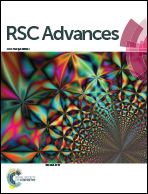Al doping effects on LiCrTiO4 as an anode for lithium-ion batteries
Abstract
Al-Doped LiCrTiO4 anode materials are successfully synthesized by a conventional solid-state reaction. Their structural and electrochemical properties are systematically investigated. With increasing the Al doping level (x), the lattice parameters of LiAlxCr1−xTiO4 get smaller. Meanwhile, asymmetric polarization was significantly reduced during the charge/discharge process, in contrast to an enhanced compatibility of electrode materials with organic electrolyte. The Al-doped LiAl0.2Cr0.8TiO4 anode can still keep a discharge capacity of 123 mA h g−1 at 1C for 100 cycles and 109 mA h g−1 at 2C. More importantly, the Al-doped LiAl0.2Cr0.8TiO4 anode exhibits remarkable electrochemical properties at a high-temperature of 60 °C with a very stable capacity of about 145 mA h g−1 at 1C, and is promising as a high-performance anode.



 Please wait while we load your content...
Please wait while we load your content...